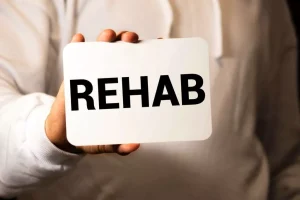Guidance for the Telehealth Delivery of Cognitive-Behavioral Therapy for Anxiety Disorders in Youth SpringerLink

It was developed more than half a century ago by American psychiatrist Dr. Aaron T. Beck and is commonly used to treat various mental health disorders, such as anxiety, phobias, personality disorders, schizophrenia, marital discord, and substance abuse. Cognitive behavioral therapy can be a highly effective choice for treating alcohol and substance use disorders. It can be used on its own or combined with other approaches that work together to support a person’s long-term recovery. However, it is not the only option out there, so talk to your healthcare provider about what’s available to decide what approach is best for your needs. As with other treatments for alcoholism and drug abuse, including pharmaceutical treatments, cognitive behavioral therapy works best when combined with other recovery efforts.

How Does Cognitive Behavioral Therapy Work?
Treatment dissemination research, conducted comparatively early in its development, may ease a new clinical technology’s way into clinical practice [129]. This is embodied in research to assess practitioners for their attitudes toward certain practices, including medications [130], manual-guided therapies [131,132], treatments for co-occurring disorders [133], or specific interventions [134]. Backer [135] and Lehman et al [136] have advanced this clinician assessment to include readiness for change for new practice implementation. Implementation researchers such as Drake et al [137] may provide addiction research with more developed measurement, methodologies, and strategies to address barriers and facilitators to practice adoption and sustainability. This more advanced stage of research has particular relevance for problem-service matching and the development of treatment service fidelity scales akin to therapy adherence/competence measures. NIDA recently outlined 13 principles of effective treatment including information on many of the treatments cited previously [110].

Duration of Therapy and Frequency of
- This is the case with all alcoholism and drug treatment approaches, because every person deals with and recovers from addiction in a different way.
- The client gradually exposes herself toincreasingly difficult situations with greater relapse risk but does sowithout using.
- LAAM has low abuse potential, but its use is rare because of some findings of potential adverse effects on the cardiovascular system, regulatory and insurance issues, and clinic acceptance [24].
- Clientsinvolved in the abstinence-contingent program had fewer cocaine-positiveurine samples, fewer days of drinking, fewer days of homelessness, and moredays of employment during the followup period than those in the standardtreatment.
At the broadest level,they are considered either interpersonal (i.e., involving a present orrecent interaction with someone else) or intrapersonal-environmental (i.e.,factors that are either internal to the individual or reactions tononpersonal environmental events). These situations includemany emotional, interpersonal, and environmental settings in which peoplecommonly abuse substances and where they are likely to relapse. These situations also serve as thefoundation from which a number of measures of substance-relatedself-efficacy have been developed (Annisand Davis, 1988b; DiClementeet al., 1994; Sklar et al.,1997). Addiction Resource is an educational platform for sharing and disseminating information about addiction and substance abuse recovery centers. Addiction Resource is not a healthcare provider, nor does it claim to offer sound medical advice to anyone. Addiction Resource does not favor or support any specific recovery center, nor do we claim to ensure the quality, validity, or effectiveness of any particular treatment center.

Benefits of CBT for Alcoholism and Addiction
This large RCT involved 1383 patients with the diagnosis of alcohol dependence, recently abstinent from alcohol. No combination was more effective than naltrexone or combined behavioral intervention (CBI) in the presence of medical management. However, CBI alone was less effective (e.g., resulted in lower percent days abstinent) than medical management and placebo. The results of this study suggest that although CBI may reduce cbt interventions for substance abuse alcohol consumption, placebo pills and a meeting with a health care professional can have a stronger positive effect than CBI alone. Brief interventions for alcohol use disorders have been developed for use in settings other than addiction treatment programs, such as in primary care practices. These interventions generally consist of screening, assessment, advice, and greater frequency of follow-up visits [45,46].
If a slip occurs, the therapist shouldtry to bring the more negative attributions for relapse (internal, stable,and generalized) to the client’s attention so that he can identify thesetendencies and learn how to change them. Clients can be helped to see therelapse as caused by a lack of appropriate coping skills for the particularsituation (i.e., external), alterable with training or practice (i.e.,unstable), and not implying that everything the person does is wrong (i.e.,specific). This change in perspective will help reduce the client’s sense ofhelplessness and loss of control. Addressing the attributional processshould be done in the broader context of educating the client about therelapse process. The cognitive-behavioral approach attempts to integrate all of thesetheoretical details into a meaningful model of substance abuse disorders(Mackay et al., 1991; Marlatt et al., 1988).
Cognitive-Behavioral Theory
Common elements of behavioral treatments based on theories ofoperant learning include contingency management, behavior contracting, communityreinforcement, and behavioral self-control training. The following sectionsdescribe some of the elements used in brief behavioral therapies based on theoperant learning model. Platforms for delivering addiction interventions via technology are diverse and multiplying rapidly.
- To conclude, the use of therapeutic communities for treatment of substance use disorders does not have a strong evidence base.
- Through research, experts have found that treating addiction can be most effective when all co-occurring conditions are treated together, at once.
- For example, the relative contribution of affective and social/environmental factors can vary widely across patients.
- You look at your thoughts, such as thinking about the worst case scenario or either-or thinking, and your therapist helps you reframe those thoughts into something healthier and productive.
- Unwelcome feelings and behaviors are usually a consequence of a person’s environment or past experiences.
Three and six-month follow-up indicated significant reductions in drinking outcomes, but no significant differences between conditions (PDA at 3 months follow up was 73.3 for OA+SR compared with 71.2 for SR only). Relapse prevention also stresses the importance of preparing for thepossibility of a relapse and planning ways to avoid it or, failing this,stop the process quickly and with minimal harm when it does occur. Having a drill and being prepared for a fire does notnecessarily mean that a fire will occur. It is helpfulto have very concrete emergency plans, including the phone numbers ofindividuals supportive of the client’s recovery process.

The combination has been found to enhance outcomes for opiate, alcohol, and cocaine use disorders [93,95,96]. Understanding that many who suffer from substance use disorders have heterogeneous resources, problems and preferences, these methods can be integrated both philosophically and in practice [95,97]. Twelve-Step Facilitation Therapy (TSF) is a manual-guided therapy based upon the 12-step model [91] outlined in the https://ecosoberhouse.com/ Alcoholics Anonymous “Big Book” [92]. The intervention focuses on the patient’s acceptance of his/her alcohol use as a disease, using 12-step tools, and connecting with recovering persons in the fellowship. The manual-guided version was evaluated in comparison with MET and CBT in Project MATCH NIAAA Project MA TCH Study and produced favorable outcomes on abstinence, treatment retention, and other life dimensions [79].
- The helpline at AddictionResource.net is available 24/7 to discuss the treatment needs of yourself or a loved one.
- Similar outcomes and common themes in the behavioral and psychosocial treatments have led many to speculate about the nonspecific or nontechnical factors in all effective therapies.
- Because of this emphasis on rationalunderstanding, the cognitive therapist will typically begin therapy byexplaining the nature of her approach (seeFigure 4-12for a sample openingscript).
- Oxford Treatment Center is a leading outpatient and inpatient drug and alcohol rehab in Mississippi.
Cognitive behavioral therapy for addiction
A literature review was undertaken using several electronic databases (PubMed, Cochrane Database of systemic reviews and specific journals, which pertain to psychosocial issues in addictive disorders and guidelines on this topic). The evidence base cited consists of findings from either individual studies or meta-analyses of studies that largely were randomized controlled trials (RCT) in which individuals exposed to these psychosocial interventions had significantly better substance use outcomes either at the end of the treatment phase or at follow-up. Consensus exists that several psychosocial treatments or interventions for substance use disorders are “evidence-based.” These include cognitive-behavioral therapy (CBT) (including relapse prevention (RP)), contingency management (CM), motivational enhancement/motivational interviewing (MI) and brief interventions (BIs) for alcohol and tobacco. We will then focus on Stage 3 and 4 issues, reviewing the status of dissemination of CBT in clinical practice, highlighting challenges to dissemination and the promise of technology-based approaches to address the ‘implementation cliff’ (Weisz, Ng, & Bearman, 2014). Finally, we speculate how CBT may evolve during the next 30 years, if informed by developments in technology, cognitive science and neuroscience.
